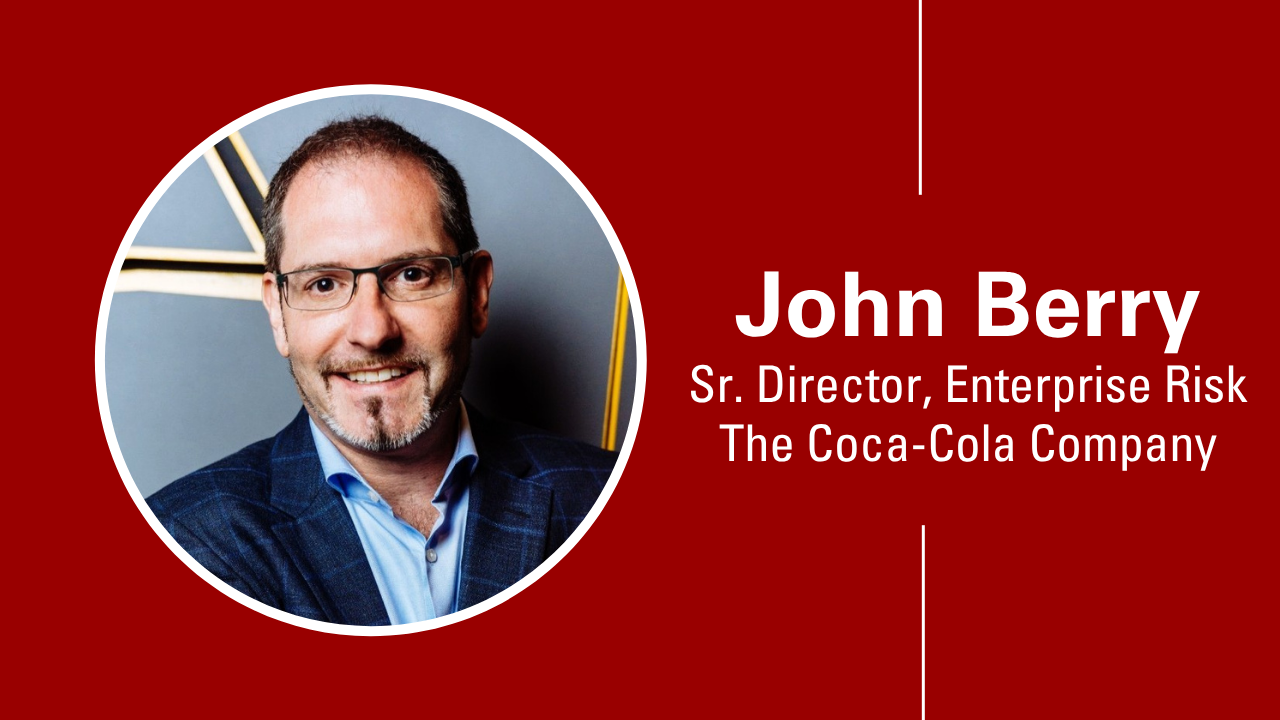Intersection of Strategic Planning and Risk Management
Michael Raynor, Distinguished Fellow, Deloitte Consulting and author of The Strategy Paradox and The Innovator’s Solution, explored the relationship between strategic commitment and risk management in determining whether a firm will be successful at the September 28, 2007 ERM Roundtable. Raynor provided an overview of the conventional thinking around strategic commitment and the level of uncertainty organizations face as they commit to a particular strategy. He then examined some case studies of organizations that had committed to strategies in the face of tremendous uncertainty. He concluded with some practical suggestions for managing uncertainty.
The Strategy Paradox
When organizations choose a strategy, they must make critical predictions about the future. The future, as we all know, however, is deeply unpredictable. Therefore, when you compare companies who are very successful with those who are failures, you find that they have many things in common. The biggest difference between them may appear to be just luck in predicting the future. This is what is referred to as the strategy paradox: the boldest strategies that have the greatest possibility of success may also be the strategies that have the greatest possibility of failure. In order to resolve the paradox, it is necessary to take a different approach to developing strategy in the face of uncertainty.
Raynor illustrated this paradox with Sony’s strategy for its betamax VCR and its minidisk player product lines. In both cases, Sony appeared to have all the ingredients for a successful strategy: it understood its customers’ needs, identified viable market segments, developed cutting-edge products, executed flawlessly, and monitored and responded to its competitors’ countermoves. Yet, with both strategies, Sony failed because the commitments the company had to make to achieve success were undermined when it’s perfectly reasonable assumptions about the future turned out to be wrong. Sony’s failures were not because of a bad strategy but rather were caused by a great strategy coupled with bad luck. When key uncertainties broke against it, Sony became a victim of the strategy paradox.
Why is the strategy paradox just now being discussed? Raynor found that most research in this area was focused on comparing successful companies – those that have had great strategies and good luck with mediocre companies who have perhaps avoided high risk, high return strategies. For a variety of reasons, very little research has examined complete failure. It is only when you compare the highly successful companies with the complete failures, that you see the obvious similarities in strategic commitment, and the critical differences in the management of uncertainty.
Managing Strategic Uncertainty
A Firm must make strategic commitments to unique assets or particular capabilities that will make its strategy difficult for competitors to imitate. The downside of this commitment is that if you make the wrong commitments based upon incorrect beliefs about the future, it can take a long time to undo them and make new ones. The resolution of this strategy paradox rests not upon the ability to better predict the future or adapt more quickly to changes, but rather on a firm’s ability to manage strategic uncertainty by separating the management of commitments from the management of uncertainty. Some in the organization must be charged with the responsibility for delivering on the commitments the organization has already made, while others in the organization must take responsibility for mitigating risk that accompanies uncertainty and opening up promising new opportunities.
The levels of hierarchy can be distinguished by the time it takes for those at each level to know whether or not they have made the right decisions today. At the functional level, most decisions deal with the short run, and there is very little strategic uncertainty. This is the level that must focus almost exclusively on delivering on the commitments. Senior management and the Board of Directors are responsible for longer time horizons and should therefore focus their efforts on managing strategic uncertainty. This new organizing principle is termed “Requisite Uncertainty”, because each level of the hierarchy is defined by its relationship to managing strategic uncertainty.
Explicitly identifying strategic uncertainties and requiring that senior management take responsibility for these uncertainties is different from most traditional risk management practices, which are generally focused on more near term uncertainties such as supply chain, or reputation risk. Now we are explicitly articulating the risk that the company has committed to the wrong strategy, and are charging senior management with developing a mitigation plan for dealing with that risk.
Achieving Strategic Flexibility: Preparing for the Unpredictable
In order to achieve strategic flexibility, CEO’s should focus on building “strategic options” so that the firm has the ability to pursue alternative strategies that could be useful, depending on how key uncertainties are resolved. Having these strategic options makes commitment possible. Strategic options should be distinguished from “growth options” where a company might make a small investment in a new venture and see it as an option on future growth: if it succeeds, then invest more in it; if it falters, let it wither. Strategic options, however, enable different parts of a company to pursue fundamentally different strategies. A strategic option is an option on an element of an alternative strategy that might or might not be implemented, not simply an option on further investment in a new business that might or might not succeed.
Raynor presented a useful framework for achieving strategic flexibility that has been put in place at Johnson & Johnson, the diversified U.S. pharmaceutical, medical devices, and consumer products company. This framework contains the following four elements:
- Anticipate: build scenarios of the future
- Formulate: create an optimal strategy for each of those futures
- Accumulate: determine what strategic options are required
- Operate: manage portfolio of options
This framework may seem like a combination of existing management tools like scenario-based planning, strategic planning or real options, but achieving strategic flexibility requires that you integrate these tools and ground them in the hierarchical approach to managing commitment and uncertainty discussed above. What is new here is that uncertainty is placed at the core of decision making at the highest level of an organization rather than being treated as an afterthought to commitments already made. The result is an integrated approach to creating greater value at lower risk.
Raynor concluded by observing that this approach of devoting senior management and the board to questions of strategic uncertainty is a significant shift in emphasis for many organizations; however, successful strategies must be built upon uncertainty, not in spite of it. The development and management of strategic options is what allows companies to commit in the face of uncertainty.
For those interested in learning more about Raynor’s view, see his book, The Strategy Paradox, Deloitte Review, 2007.
- Categories:
- Types:


